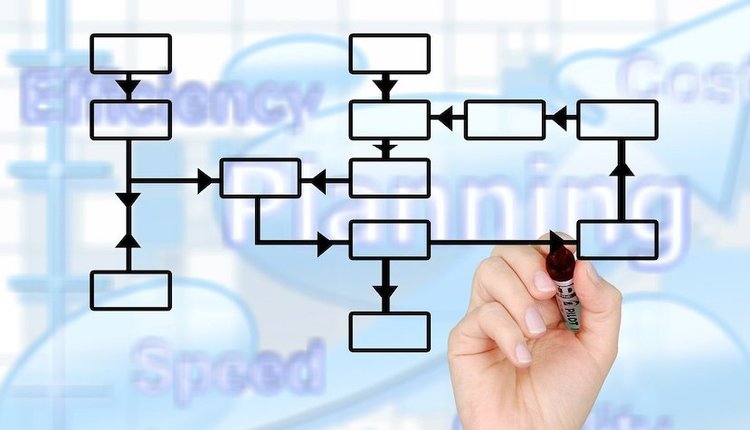
Image by: MathieuViennet, ©2017 Getty Images
A lot has been written about the benefits of enterprise content management (ECM). Although most of what I read is correct, it usually only shows a part of the whole subject. So, I wanted to clarify the concepts and identify the metrics around which gains should be measured.
To start with, we need to keep in mind three key lessons when we think about the concept of these benefits:
- There are characteristics, associated advantages, and the resulting benefits. Benefits typically must always be translated into financial gains of some sort, and they usually come from some advantage associated with the published characteristics.
- It is not the tool that makes the solution; rather, it is the sum (tool + configuration + documentation on the configuration) that makes the solution.
- ECM/electronic document management (EDM) systems are the information foundation for any other system, such as enterprise resource planning (ERP), customer relationship management (CRM), or even email.
There are two types of benefits following the implementation of such a solution: The objective and subjective benefits. The first are calculated in a general, standard way, while the latter can only be calculated based on the specific company installing the solution.
1. People
It is quite popular to hire more people just because there are more documents to handle. I know some companies where a “director” can only be a director if there are 50 people depending on him/her. This is a clear motivation for inefficiency. A good ECM/EDM solution, which is well-configured, should eliminate the need for some of this staff. Reducing the number of people required to handle documents not only impacts salary and tax savings but also hugely corresponds to your utilities costs.
2. Time
It's also necessary to consider the time that each employee spends with activities not related with his/her core business, like searching for a contract in the archives or, worse, checking everybody’s desk, because no one really knows where that particular contract is located.
Let’s make a very simple calculation: Assume there are 22 working days per month and eight working hours per day, with an average US salary of $1,500 per month, and the company has 50 employees. Each employee searches for 10 documents per day, taking seven minutes (very optimistic here) to find it. At the end of the year, the company would pay $125,000 just to search for documents, without any kind of processing. In a different perspective, we can say that the company lost more than 1,800 days in a single year.
Objective Benefits
It is quite popular to hire more people just because there are more documents to handle. I know some companies where a “director” can only be a director if there are 50 people depending on him/her. This is a clear motivation for inefficiency. A good ECM/EDM solution, which is well-configured, should eliminate the need for some of this staff. Reducing the number of people required to handle documents not only impacts salary and tax savings but also hugely corresponds to your utilities costs.
2. Time
It's also necessary to consider the time that each employee spends with activities not related with his/her core business, like searching for a contract in the archives or, worse, checking everybody’s desk, because no one really knows where that particular contract is located.
Let’s make a very simple calculation: Assume there are 22 working days per month and eight working hours per day, with an average US salary of $1,500 per month, and the company has 50 employees. Each employee searches for 10 documents per day, taking seven minutes (very optimistic here) to find it. At the end of the year, the company would pay $125,000 just to search for documents, without any kind of processing. In a different perspective, we can say that the company lost more than 1,800 days in a single year.
All this time should have been used to focus on the core business, because productivity, hence, financial benefit, comes from it.
3. Paper
I find one of the most common situations is the intent of replicating the paper process, but based on today's technology and methodology, that dramatically increases the complexity and consumes valuable resources. For example, people send documents to each other via email. After receiving it, each person prints the document and writes information on it, or signs it with a pen, only to digitize it again to send to the next person.
4. Ink and toner
Naturally, if we save costs on paper, we also save in purchasing ink or toner. In cases where there is a printing contract with a supplier, that contract may be reduced, as the number of printed pages needed will be less.
5. Storage space
Again, this has to do with paper handling. If a company has to rent an extra square meter just to store paper, well, that space will cost you. There are paper documents that cannot be thrown away, such as a signed contract, but in this case, these documents do not need to sit at a premium cost. Since they are digitally archived and can be accessed on a daily basis, the paper copy might as well be sent to specialized companies that store paper documents where space is cheap and security is high.
1. Happiness
A well-established (meaning an excellent solution with good integrations) ECM/EDM will allow people to work from anywhere. “Work” no longer means a location but an action. It is well-documented that when employees are happy, their productivity increases significantly—some sources place this number around 30%. So, if an employee can save a daily trip to “work,” cutting the cost of travel and time, hence, happiness.
2. Savings on payments
In many companies, the possibility of speeding up payment processes allows for price renegotiation. If the internal process usually takes 60 days to pay a supplier but, after the installation of an ECM/EDM solution, that payment can be made within 15 days, there is clearly space to renegotiate better prices.
3. Customer service
It's common knowledge that it's about seven times costlier to get a new customer than to keep existing ones. To keep these existing customers, we need to make them happy. This means not only providing information as soon as they require it but also letting them access their own documents directly from the digital archives. Even if customers do not execute that direct access, just the ability to satisfy their inquiry on the spot by looking at the correct document (not just a record on some application) is something beyond trivial. This exponential improvement in customer service can be found anywhere from a call center to a heavy machinery maintenance worker who carries a digital file cabinet in a laptop.
4. General productivity
Productivity is directly related with the effectiveness of internal processes. These processes involving documents can be found from human resources to research and development. PDF descriptions, graphics, videos, and audio files all are documents and are subject to be processed individually or clipped together.
5. Human resources
In May 2018, the European Union will enforce a law forbidding customer or employee documents containing confidential information (a simple address will do) to be left on shared folders or on people’s desktops. They will have to stay in software that both controls access as well as logs activity. Penalties will be very high: from €20K for small companies to four percent of annual invoicing for large corporations.
Naturally, if we save costs on paper, we also save in purchasing ink or toner. In cases where there is a printing contract with a supplier, that contract may be reduced, as the number of printed pages needed will be less.
5. Storage space
Again, this has to do with paper handling. If a company has to rent an extra square meter just to store paper, well, that space will cost you. There are paper documents that cannot be thrown away, such as a signed contract, but in this case, these documents do not need to sit at a premium cost. Since they are digitally archived and can be accessed on a daily basis, the paper copy might as well be sent to specialized companies that store paper documents where space is cheap and security is high.
Subjective Benefits
1. Happiness
A well-established (meaning an excellent solution with good integrations) ECM/EDM will allow people to work from anywhere. “Work” no longer means a location but an action. It is well-documented that when employees are happy, their productivity increases significantly—some sources place this number around 30%. So, if an employee can save a daily trip to “work,” cutting the cost of travel and time, hence, happiness.
2. Savings on payments
In many companies, the possibility of speeding up payment processes allows for price renegotiation. If the internal process usually takes 60 days to pay a supplier but, after the installation of an ECM/EDM solution, that payment can be made within 15 days, there is clearly space to renegotiate better prices.
3. Customer service
It's common knowledge that it's about seven times costlier to get a new customer than to keep existing ones. To keep these existing customers, we need to make them happy. This means not only providing information as soon as they require it but also letting them access their own documents directly from the digital archives. Even if customers do not execute that direct access, just the ability to satisfy their inquiry on the spot by looking at the correct document (not just a record on some application) is something beyond trivial. This exponential improvement in customer service can be found anywhere from a call center to a heavy machinery maintenance worker who carries a digital file cabinet in a laptop.
4. General productivity
Productivity is directly related with the effectiveness of internal processes. These processes involving documents can be found from human resources to research and development. PDF descriptions, graphics, videos, and audio files all are documents and are subject to be processed individually or clipped together.
5. Human resources
In May 2018, the European Union will enforce a law forbidding customer or employee documents containing confidential information (a simple address will do) to be left on shared folders or on people’s desktops. They will have to stay in software that both controls access as well as logs activity. Penalties will be very high: from €20K for small companies to four percent of annual invoicing for large corporations.
Metrics
Benefits, whether objective or subjective, must be measured. When we analyze the objective benefits, we are usually able to calculate savings independent of the company, but the same is not true concerning the subjective benefits, since they depend a lot on the culture of the company itself—the same way it may depend on the employee's reception to change, which may be tied to the existing leadership at different levels.Within subjective benefits, the same solution may bring huge benefits for one company but just marginal ones for another. At the end of the day, it comes down to people's willingness to use the system installed. ERPs and CRMs, for instance, have more limited scope of use and must be used for it. ECM/EDM can be used to archive any document and send it on a flow for processing. It demands more imagination than other specific tools.
Since everything in a computer is a document, just providing a magic wand to the customer and saying, “Imagine the document solution of your dreams," is not enough. Although the ECM consultant can provide all that the customer asks for, the difficult bit is what the customer wants to ask. Nevertheless, the gains of ECM/EDM are much greater than people can imagine.
Joao Penha-Lopes specializes in document management since 1998. He holds two postgraduate degrees in document management from the University Lusofona (Lisbon) and a PhD from Universidad de Alcala de Henares (Madrid) in 2013, with a thesis studying the economic benefits of electronic document management (EDM). He is an ARMA collaborator for publications and professionally acts as an advisor on critical information flows mostly for private corporations. Follow him on Twitter @JoaoPL1000.
















